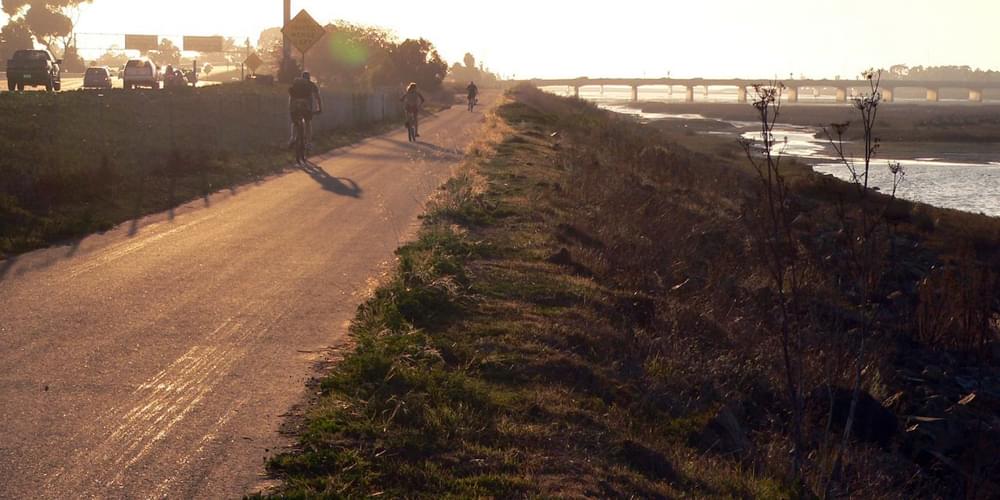




Trails promote natural resource management strategies that ensure environmental preservation, quality of life, and economic development.

In many places, trails are a key ingredient in preserving open space and encouraging public interest in habitat and natural landscapes. In southern California, trails are especially important in preserving public access to stream corridors and the coast. We wanted to share a concise and well-written explanation of how trails are good for our environment. This is from San Diego’s “County Trails Program Objectives:”
Trails promote natural resource management strategies that ensure environmental preservation, quality of life, and economic development:
• Providing a “buffer” between the built and natural environments
• Allowing passive recreational use and educational access to protected areas
• Increasing the value of open space to the public by providing access
• Enhancing property values of communities by connecting them to open space areas
• Providing an alternative mode of transportation
• Encouraging cleaner air by decreasing air pollution by automobiles
• Supporting communities and businesses through eco-tourism
• Preserving culturally and historically valuable areas
Trails are an integral part of our natural environment and can be used as a tool for conservation. Trails assist with preserving important natural landscapes, providing necessary links between fragmented habitats and providing tremendous opportunities for protecting plant and animal species.
Increased development has contributed to the creation of habitat “islands”— isolating wildlife, reducing their natural habitats and survival. Trails provide that important link between these island populations and habitats and increase the available land to many wildlife species.
Environmental Impacts of Winter Recreation
posted Nov 25, 2023
Regardless of our intentions, many species perceive humans as a threat and respond accordingly. In general, animals respond to threats by first increasing vigilance (time spent looking around versus foraging), and running away if the threat is perceived to be imminent.
posted Jul 15, 2022
This research investigated the influence of several use-related, environmental, and managerial factors on soil loss on recreational trails and roads at Big South Fork National River and Recreation Area, a unit of the U.S. National Park Service.
posted Jul 15, 2022
This article reviews the most recent and relevant recreation ecology studies that have been applied in wildland settings to avoid or minimize resource impacts.
posted Jul 15, 2022
This article examines the recreation ecology literature most relevant to wilderness and backcountry, with a focus on visitor impacts to vegetation, soil, wildlife, and water resources.
9,332 views • posted 07/21/2013